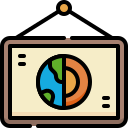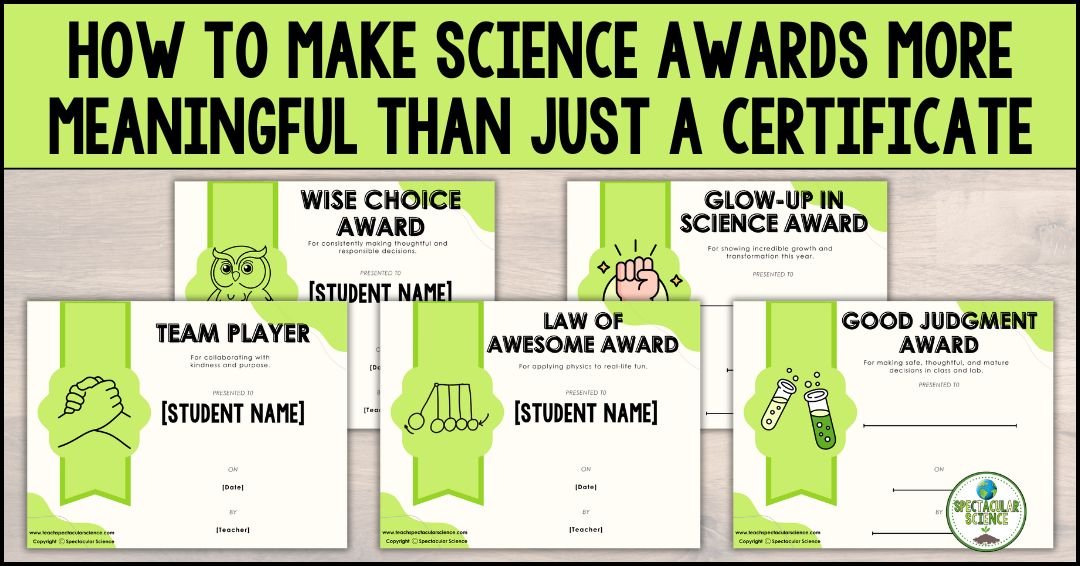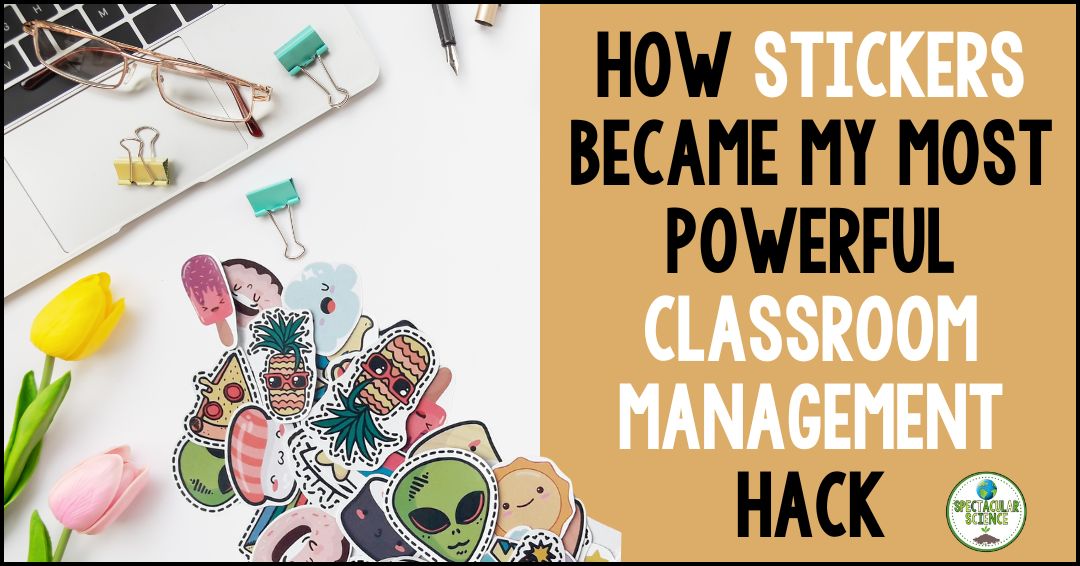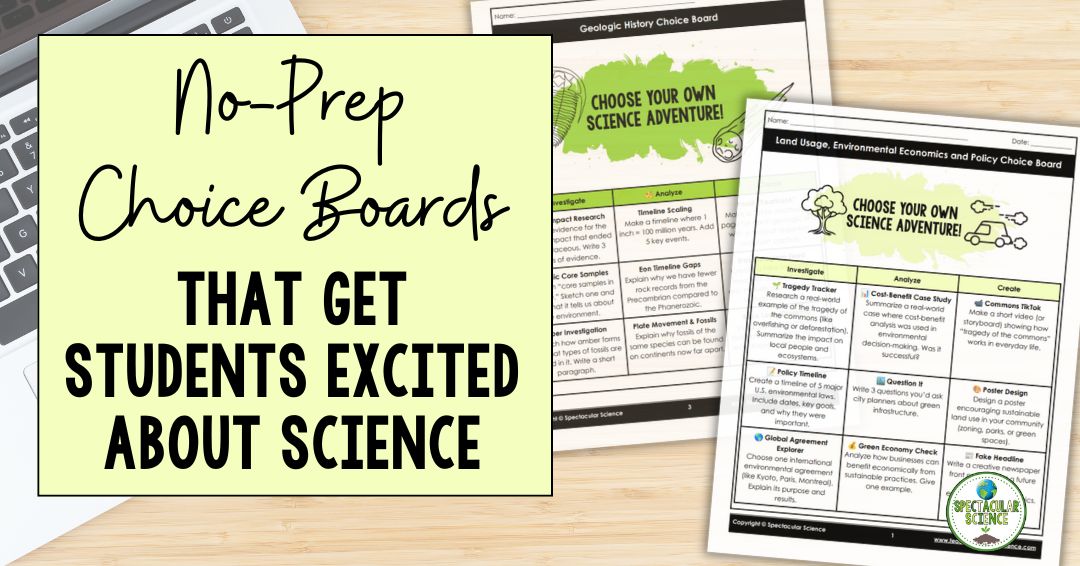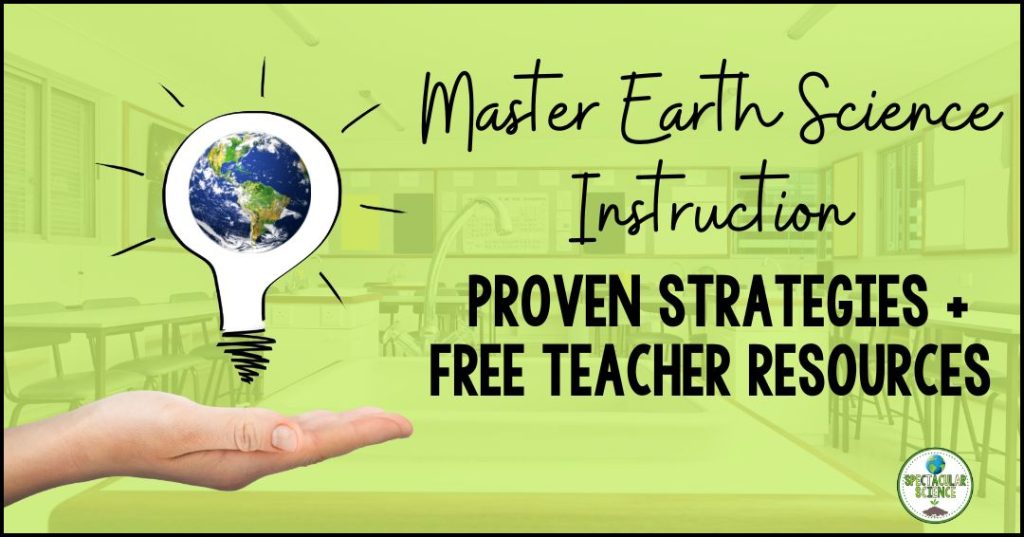
Whether you’re prepping for your very first year teaching Earth Science (welcome to the club!) or you’ve been in the game for a while and need a fresh approach, I want to share some ideas, tools, and real talk that have helped me bring Earth Science to life—without burning out in the process.
Earth Science is hands down one of the most dynamic, fascinating subjects to teach. You get to take students on a journey from the core of our planet to the edges of the universe, exploring volcanoes, weather systems, rocks, stars, and more.
But let’s be honest: between labs, vocabulary, standards, and trying to keep students engaged—it can get overwhelming fast.
That’s why I started building my own system: full of structure, creativity, and flexibility. And now I’m sharing it—with all the lesson plans, pacing guides, and curriculum tips I wish I had when I started.
You can grab my free Earth Science and Environmental Science pacing guides and curriculum maps right here. They’re totally editable, organized by unit, and designed to help you plan with confidence from day one.
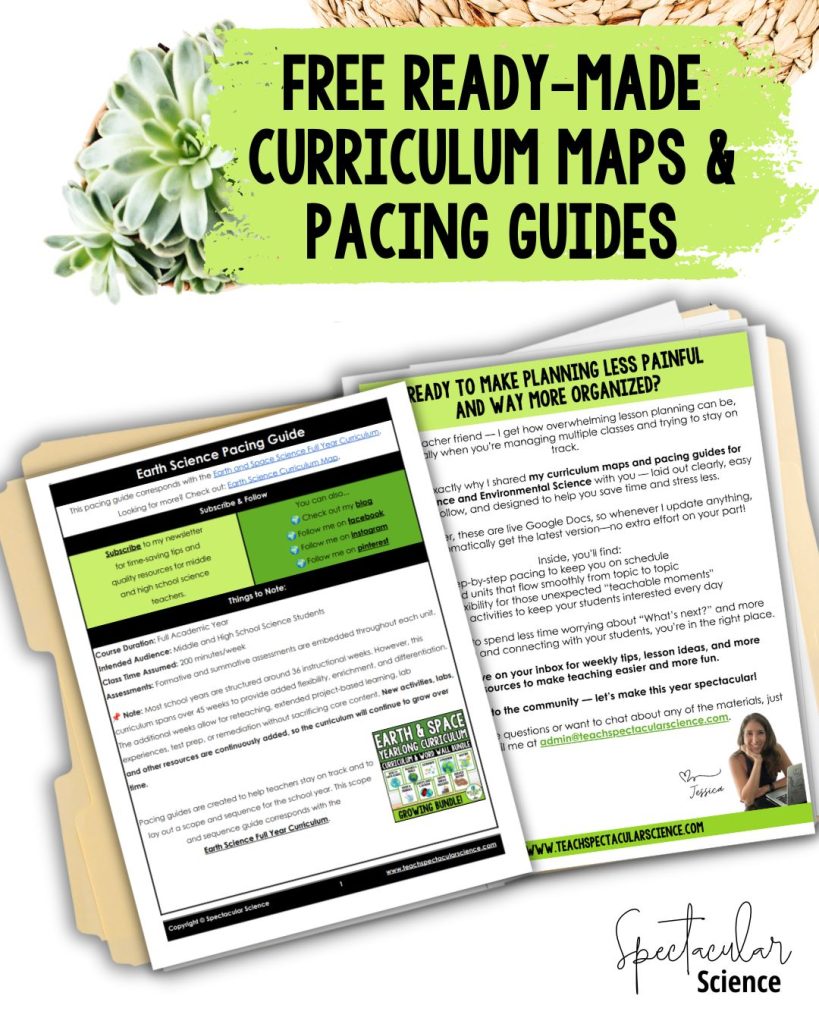
What Makes Earth Science So Different (and Awesome)
I didn’t realize this when I first started teaching it—but Earth Science stands apart from other sciences in some really cool ways:
1. It connects everything.
From biology to physics to chemistry—Earth Science pulls in bits of all the other sciences and ties them together through real-world phenomena. It’s the “big picture” science, and students who struggle with abstract ideas often light up when they can visualize tectonic plates, weather systems, or space.
2. It’s always happening.
Earthquakes, hurricanes, eclipses, climate shifts, meteor showers, volcanic eruptions—this subject is alive. It gives you so many opportunities to connect your curriculum to what’s happening right now. In my classroom, we’ll sometimes pause the lesson to analyze a recent news story using concepts we’ve already learned.
3. It encourages curiosity and critical thinking.
Instead of memorizing, students get to observe, question, and interpret. What causes a superstorm? Why don’t we feel the Earth spinning? What makes one rock valuable and another not? It’s science detective work, and it’s so satisfying to watch students start to think like Earth scientists.
You don’t need to reinvent the wheel to make Earth Science extraordinary. You just need the right blend of curiosity, structure, and a few teacher-tested shortcuts.
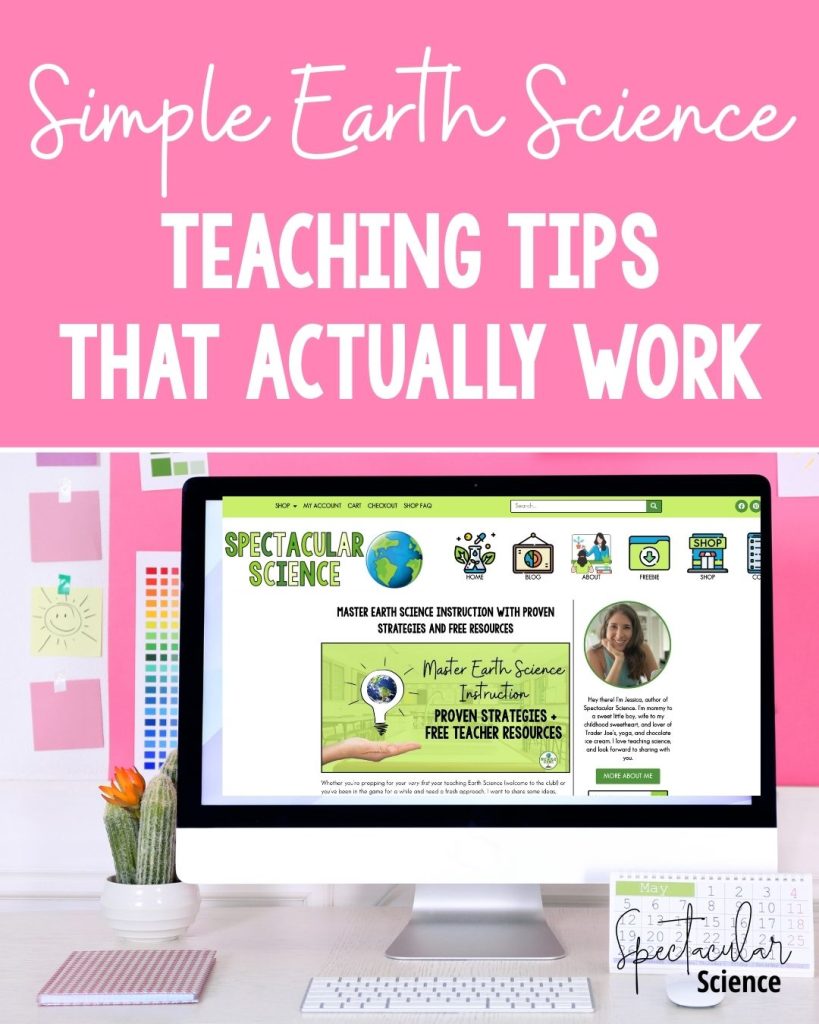
Tips & Tricks That Have Worked for Me
Let’s talk strategy! Over the years, I’ve picked up a few tricks to make teaching Earth Science smoother and more enjoyable (for both me and my students):
1. Start Every Unit with a Question or Mystery
Instead of diving right into notes, I like to kick off units with a question, mystery, or phenomenon.
For example:
- “How can a mountain form in the middle of the ocean?”
- “Why do we only see one side of the moon?”
- “What causes some storms to grow into hurricanes?”
Framing each topic like a mystery makes students naturally more curious and engaged.
2. Plan Your Year Around the Why
Before I even start building slides or activities, I sit down with my pacing guide and curriculum map to make sure I know why each unit matters. This helps me avoid getting stuck in the “just cover the material” trap. You can grab my editable versions for free here if you want a head start on organizing your year.
3. Build a Vocabulary Wall That Grows With You
Earth Science vocabulary can be intense. (I’m talking terms like orographic lift, pyroclastic flow, and condensation nuclei—not exactly everyday language.) To help my students keep it all straight, we build a living vocabulary wall that grows throughout the year.
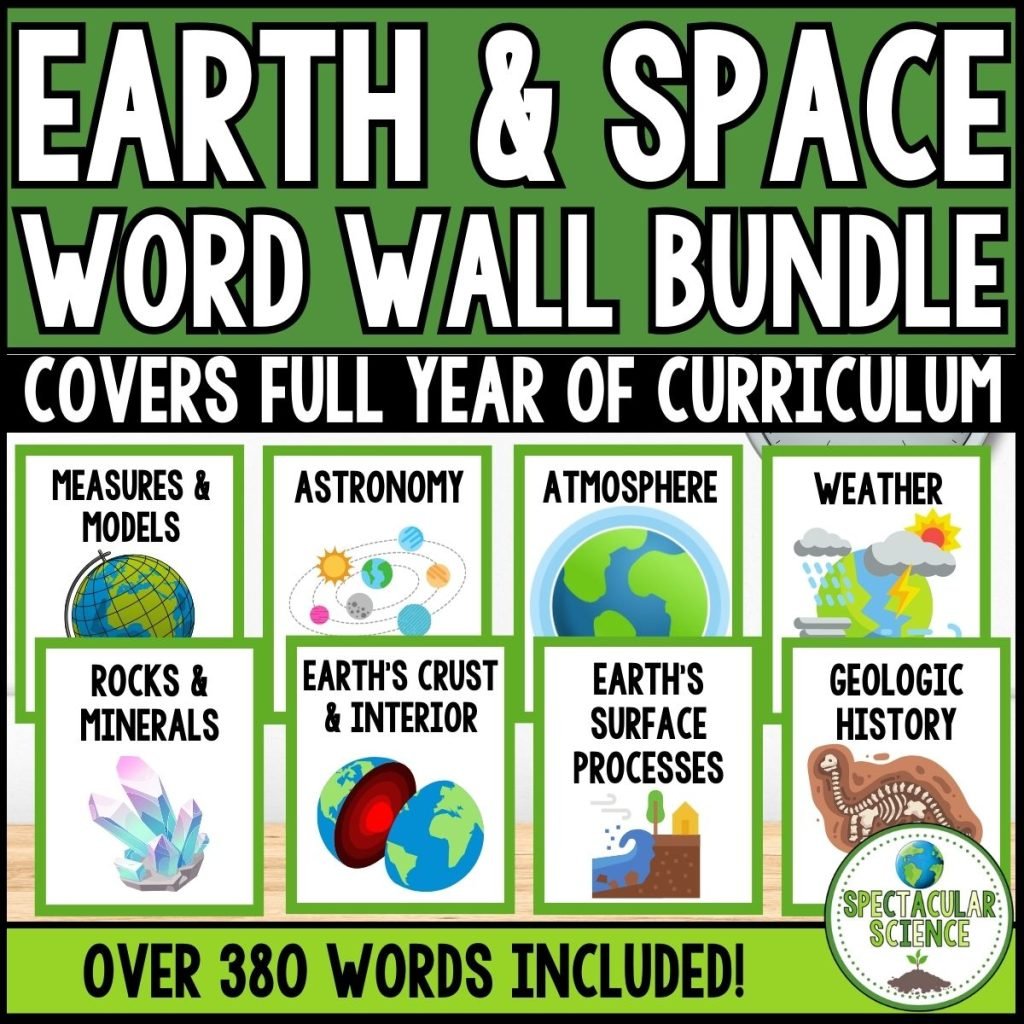
Each time we hit a new concept, we add a term to the wall together—complete with a student-friendly definition, visual cue, and unit color coding. This ongoing visual reference becomes a powerful anchor for review, especially for visual learners, ELL students, and students who benefit from repeated exposure to academic language.
Pro Tip: Try grouping your vocabulary by unit using color (e.g., blue for oceanography, orange for geology, purple for space science). This simple strategy helps students visually categorize complex terms and make quicker connections between ideas.
Want to save time? I’ve created a set of Earth Science Vocabulary Word Wall Cards you can print, cut, and go. They cover all the major terms students need to master, with clear visuals and definitions already done for you. You can check them out here.
4. Bring in Modern Examples Often
One of my favorite ways to keep Earth Science relevant is by weaving in real-world, modern-day examples. It doesn’t have to take up a whole period—sometimes just a 5-minute discussion can spark amazing connections.
Here are a few recent examples my students found fascinating:
- 🌕 NASA’s Artemis Moon Missions → tied into our unit on tides, moon phases, and space travel
- 🌋 Iceland’s recent volcanic eruptions → a great real-world case study for plate tectonics and Earth’s layers
- 🌎 Extreme weather and climate shifts → used to anchor lessons on atmospheric circulation, the greenhouse effect, and global winds
These moments help students see that what they’re learning isn’t just “for the test”—it’s literally shaping the world around them.
📚 Resource Highlight:
I’ve created 3 current event resources to make it easier to bring up-to-date science news into your Earth Science classroom:
Differentiated Current Events for FREE! – Designed with multiple reading levels in mind to support all your learners
Astronomy Current Events Activity – A ready-to-go tool for connecting headlines to space science standards
Earth Science Current Events Activity – Perfect for geology, weather, and environmental changes
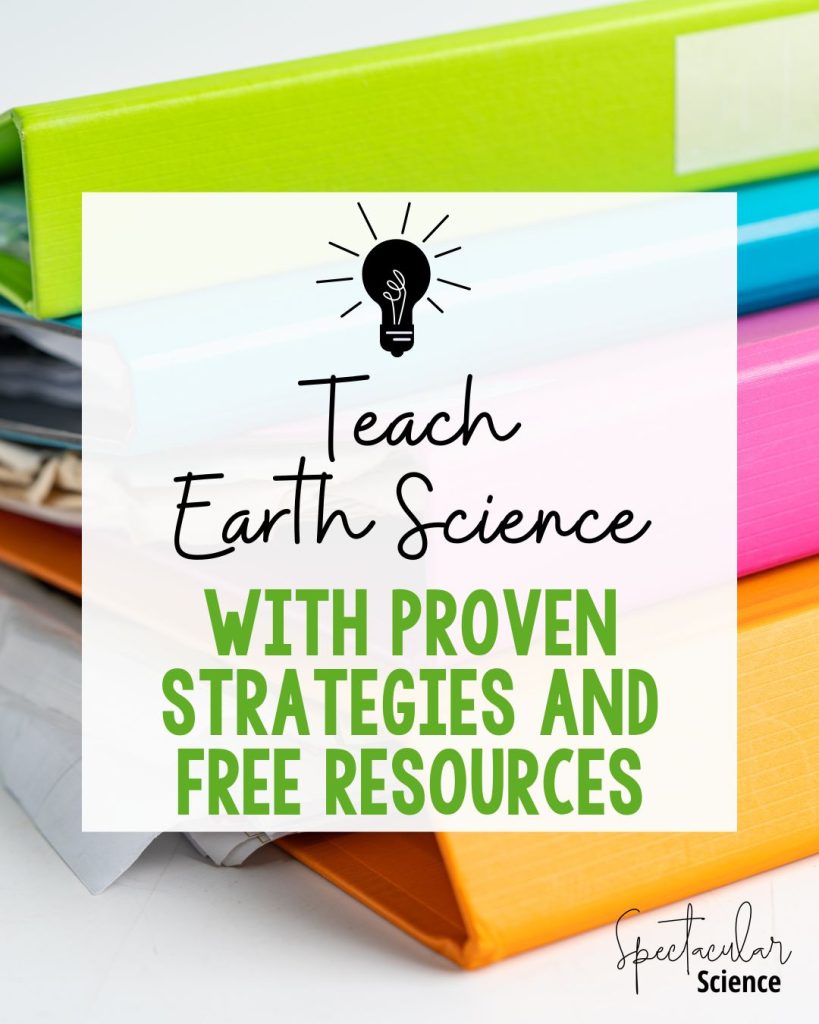
5. Use Stickers as a Secret Engagement Tool
It sounds too simple—but stickers became one of my most effective classroom management tools.
I started handing them out just for fun (space stickers during our astronomy unit, volcano stickers during plate tectonics), but I quickly noticed they had power.
🎯 Now, I use stickers to reward:
- Deep thinking during discussions
- Quiet leadership moments
- Academic growth
- Everyday kindness
They work wonders—especially with older students who pretend they don’t care (but totally do). It’s positive reinforcement that feels fun and low-stakes.

✨ I go deeper into this system in my post: How Stickers Became My Most Powerful Classroom Management Hack. It includes practical ideas and sticker favorites if you’re ready to try it!
6. Use Debates to Energize Your Classroom
If you haven’t tried debates in Earth Science yet—it’s a game-changer.
Debates encourage students to think critically, use evidence, and really take ownership of their learning. They’re especially effective in units that spark controversy or competing ideas.
Some of my favorite debate topics include:
- Should we terraform Mars?
- Is nuclear energy a safe solution for climate change?
- Are humans to blame for extreme weather events?
💬 The best part? Students get so into it—and they learn how to respectfully disagree and back up their claims with real science.
I compiled 15 debate-ready Earth Science topics in this post: 15 Engaging Debate Topics To Energize Your Earth Science Classroom. Grab them to spark your next class conversation!
7. Use Movement and Models Often
Earth Science is so visual and dynamic—but sometimes our textbooks don’t reflect that. I try to get students out of their seats with models, simulations, and role-playing wherever I can.
Some student favorites:
🌍 Human orbits – to understand rotation vs. revolution
🌀 Convection current dance – for heat transfer and atmospheric movement
🌫 Fog-in-a-bottle demo – to explain condensation
These don’t have to take a whole period. Even 10 minutes of physical modeling can make a huge difference for understanding. Check out this post for 100 Quick Hands-On Learning Ideas.
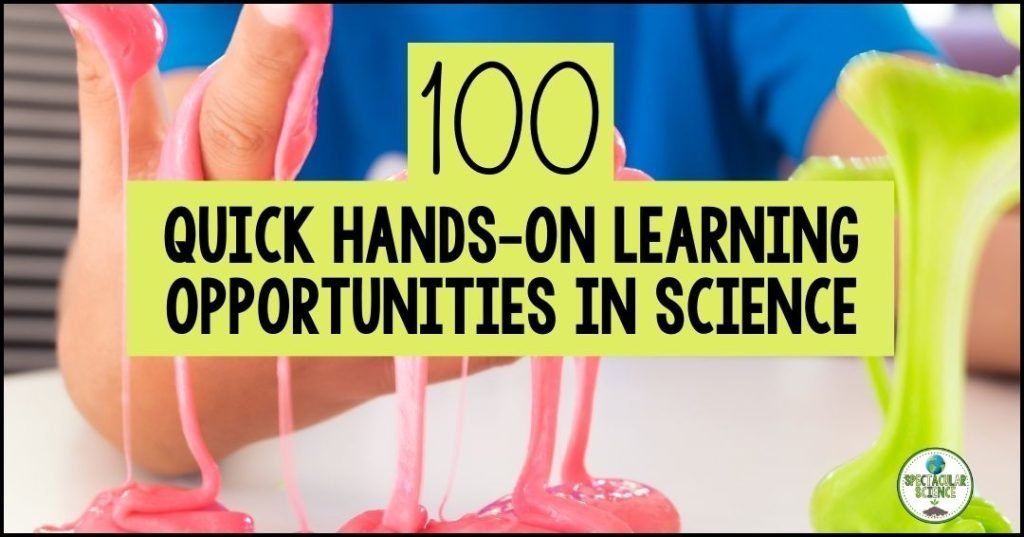
8. End Units with a Creative Review
I always try to wrap up units with something a little different—a project, a simulation, or a creative review game. This not only helps with retention but gives students a chance to show off what they know in new ways.
Ideas that have worked well:
🎨 Illustrated timelines (e.g., life cycle of a star)
🎙️ Podcast-style recordings where students explain a concept
🎲 Earth Science Bingo and review games to get everyone involved
Resources I Always Have Ready
Whether you’re teaching Earth Science in a lab-rich classroom or with limited supplies, having a core toolkit makes a huge difference.
Some things I always keep on hand:
- A mix of hands-on labs and simulations (including digital for 1:1 classrooms)
- Editable Google Slides for each unit to streamline instruction
- Clear formative and summative assessments
- An organized Google Drive folder system (one folder per unit—it’s a lifesaver)
- And of course—my trusty curriculum map and pacing guide, which I tweak each year based on what worked, what didn’t, and where I want to improve. You can download both of those here for free if you need a clean, editable way to get organized.
💡 Plus, I always keep a stash of printable task cards and reinforcement tools nearby. These are perfect for:
- Early finishers who need a meaningful challenge
- Small group stations
- Spiral review before unit assessments
- Sub plans when you need a last-minute backup
- Quick “scoot” or scavenger hunt activities to get students up and moving
Some of my task card sets cover vocabulary, data analysis, Earth processes, and more—making it easy to review in a way that’s hands-on and low-prep. They’re also great for students who need a little extra practice without it feeling like more “work.”
🌟 Bonus tip: Print a few sets, laminate them, and keep them in labeled bins by unit. Students can grab what they need without interrupting class flow—and you’ll always have an easy win at your fingertips.
Bonus: My Full Curriculum (If You’re Looking for One)
I won’t go into a full sales pitch here (I promised this wouldn’t be one of those posts), but if you are hunting for a complete, editable Earth & Space Science Curriculum that covers everything from rocks and weather to stars and galaxies, I’ve got you covered.

✅ Over 7,400 editable pages
✅ Built-in labs, projects, and review tools
✅ Google Slides, printables, assessments, answer keys—you name it
✅ Lifetime access to all future updates
✅ AND it comes bundled with the Vocabulary Word Wall Set
You can peek inside and learn more here.
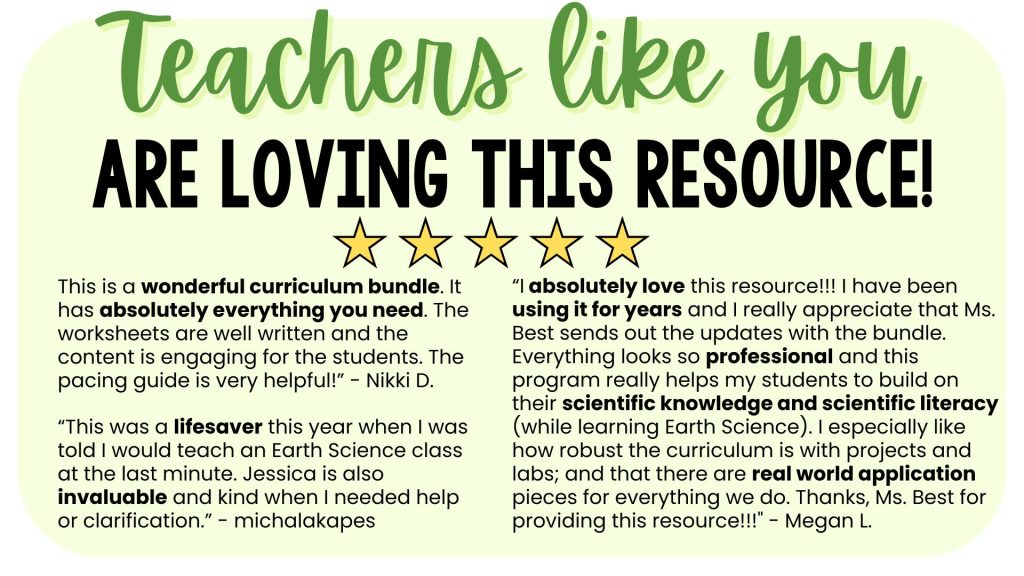
You’re Not Alone—Let’s Connect!
Whether you’re lesson planning late at night or trying to figure out how to explain eccentricity for the fifth time, know this: you’re not alone.
I’m always happy to chat about teaching Earth Science, share strategies, or help troubleshoot your pacing. You can reach out to me directly using the form below—I read every message!
Drop me a note—I’d love to hear from you.
📬 Want more Earth Science freebies, resources, and planning tools? Make sure to grab those pacing guides and curriculum maps—and I’ll send occasional updates with fresh ideas to help you keep things exciting and organized.
You’ve got this! And I’m cheering you on the whole way.


